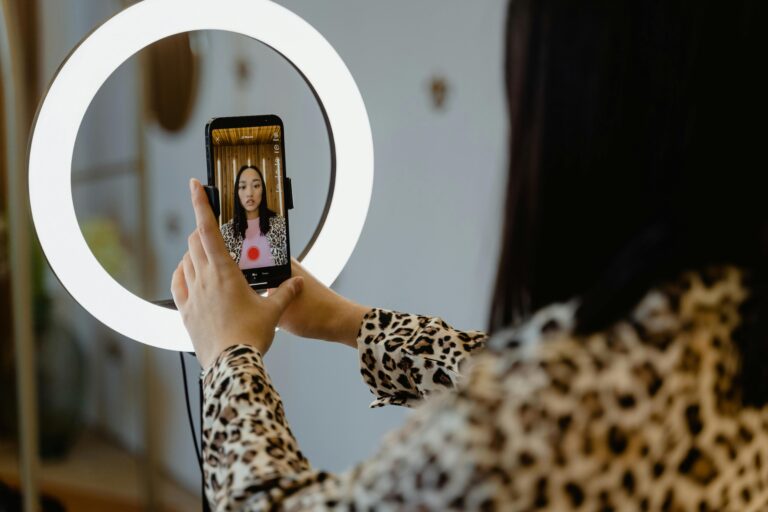As the Chinese market has reached a “new normal” in terms of levels of luxury spending, luxury brands are making tremendous efforts to keep their customers engaged –especially when these clients generated 46 % of the world’s turnover of luxury products in 2015. Whether targeting Chinese people in China, abroad or on the Web, a digital marketing strategy for the luxury industry in China is being radically recast.
Digital marketing strategy for the luxury Industry in China: Use social networks to connect with young Chinese
Young, hyper-connected and buying luxury items for themselves (Chinese people used to buy luxury products for others mainly): here are the three characteristics of China’s new upper-middle-class. This new generation of consumers is causing many luxury brands to realign their online marketing strategies, and particularly on WeChat, the most-used messaging application in China. As explained by Forbes, WeChat is the best tool “to engage in interactive and one-to-one communication, driving online-to-offline activities and encouraging loyalty.” A brand who particularly succeeded with social media marketing in China is the US jeweller, Tiffany & Co. The New York City jeweller is regularly launching WeChat campaigns as a way to connect with its younger consumers.
Yet, very few luxury brands think of WeChat as a real tool for community management. They are only 12 % to do so, according to Digital Luxury Group. But for Chinese Web users, following a brand on social media is a very strong sign of engagement, which they grant to their preferred brands only. According to a poll from Bain & Company, 60 % of 1 500 customers interviewed are also getting information about luxury products on social networks.
Monitor e-reputation to comfort about product authenticity
Luxury companies are also encouraged to use social networks to strengthen their reputation. In a sector which is overwhelmed by counterfeits, potential clients are very suspicious regarding brands. In order to make up their mind, they are particularly attentive to comments from other buyers on luxury industry specialized websites. Consequently, some groups like Four Seasons Hotels use pictures taken by their clients in their marketing campaigns to comfort customers on the genuineness and quality of their products and services.
Besides content co-creation and with the goal of sharpening the brand image, brands can use targeted SEO campaigns on the key words that are the most used by Chinese people when they look for information on a brand authenticity.
Engage Web celebrities
Another way to engage with youngest consumers can be found in associating with bloggers or celebrities who are active on the Net. Such people called Key Opinion Leaders (KOL) on Weibo and WeChat were indeed able to make Fendi’s Peekabo brand (LVMH) take off on the Chinese market for instance.
But companies tend to multiply KOLs whereas they should rather be attentive to their quality, say experts of this industry. However, big celebrities are still favoured by luxury brands, which leverage the popularity of these super KOLs to engage with a larger audience. For instance, the leather goods company Coach registered strong success after choosing the famous Chinese actress Angela Baby as the brand’s celebrity endorser.
Launch online sales, but from abroad
Finally, the digitalization of the industry implies growing online sales. However, most sold items online are mainly articles costing less than 5 000 RMB (around 730 dollars), because of the risk of counterfeits.
Partly for this reason, the B2C e-commerce platform dedicated to foreign brands Tmall Global, where luxury brands can also be found, set up its activities beyond Chinese borders. On the long term, the trend is an augmentation of online sales for luxury brands.
Following Chinese customers in their shopping abroad
The significant gap between luxury products in China and abroad (around 37 % price gap between continental China and the euro zone in February 2016) leads Chinese people to favour shopping abroad. Even though companies like Chanel or Hugo Boss are working to reduce this gap, the amount spent by Chinese people in the luxury branch abroad reached 113 billion dollars in 2015.
Brands are therefore recruiting more and more Mandarin speaking sellers in their stores outside China. They also decorate their shopping windows during the Chinese New Year with red colour – this is China’s lucky charm. More and more brands start to open their WeChat account us to follow their Chinese clients while travelling.
When doing marketing in China, focus on most recent brands
When communicating on China’s own territory, groups like Kering, Richemond and LVMH are promoting their most recent brands (Celine, Loewe…) in order to attract the youngest and most open customers, while their flagship brands are rather profitable among Chinese tourists abroad. Lastly, improve your in-store customer experience if you want to stand out. Indeed, the main challenge luxury brands face today in the Chinese market is to maintain a high-quality service in their second and third rank cities’ stores, where recruiting qualified sellers is difficult.
Stay Up-To-Date! Follow Daxue on Twitter:
#Franchise a Brand in #China: The Struggle for Western #Fast-Food Chains to Succeed in China https://t.co/Kv4AtmPBqo
— Daxue Consulting (@DaxueConsulting) January 19, 2017





